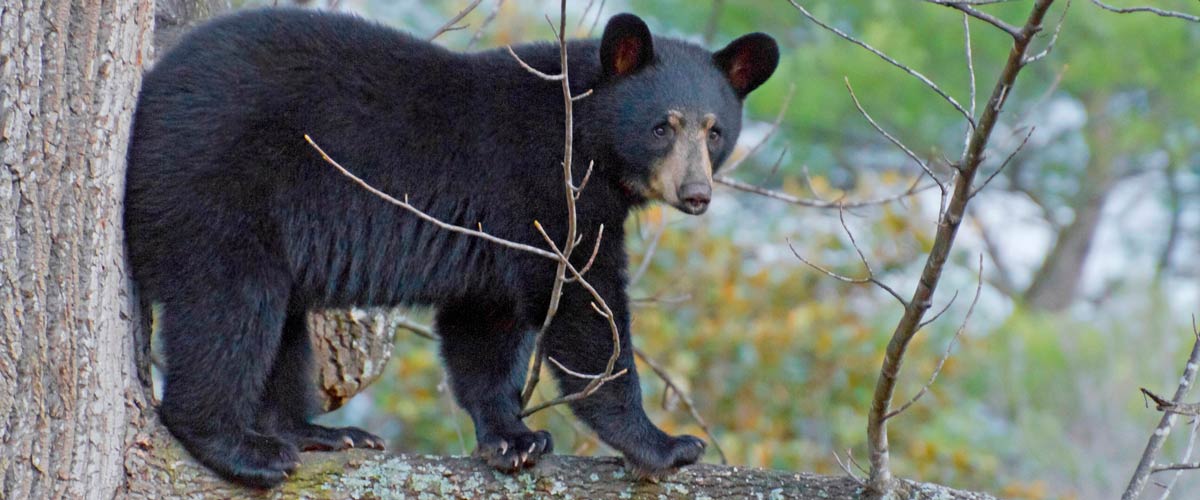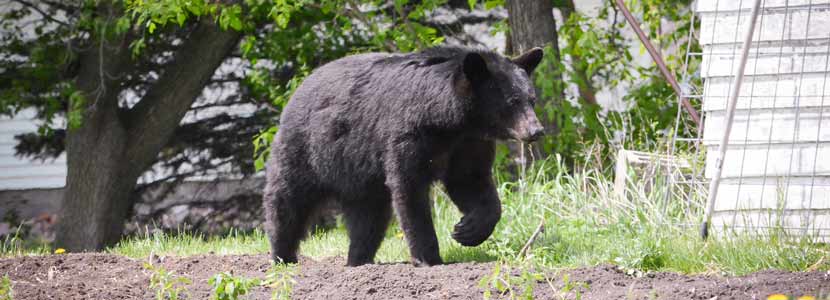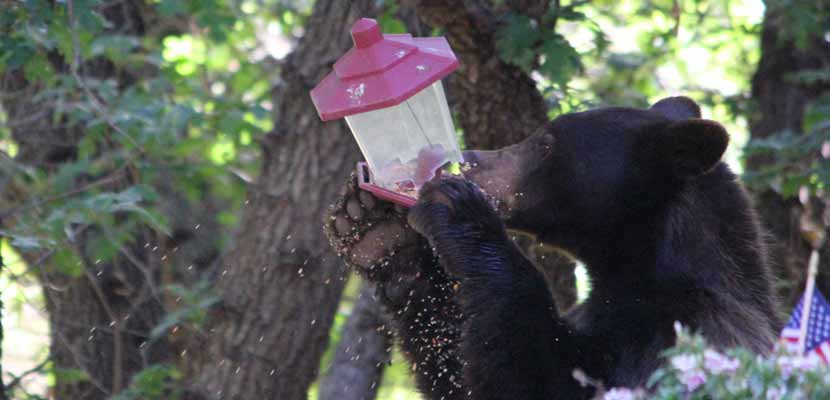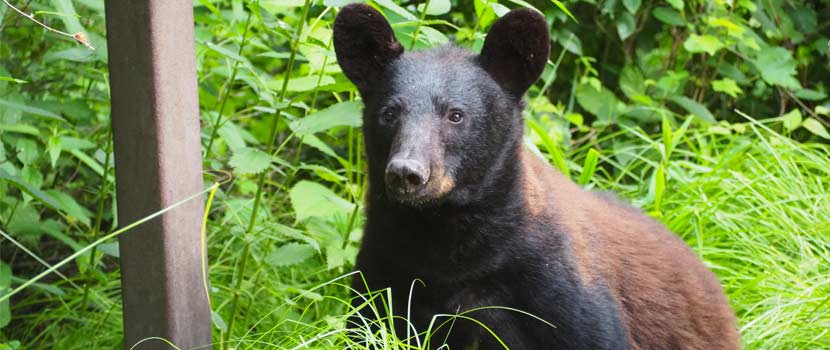
While many people think black bears are solely residents of the Minnesota Northwoods, growing bear populations have them moving farther and farther south. In fact, their range now reaches as far south as Anoka and Washington counties. In recent years, there’s even been an increase in sightings in northern Hennepin County, including in our own Elm Creek Park Reserve. And it's this time of year that these sightings are most common.
John Moriarty, senior manager of Wildlife for Three Rivers Park District, says that spring, when bears awaken from hibernation hungry, is the most likely time to see bears. In early spring, the woods are bare, which makes bears easier to spot. During this time, bears often venture out for food due to the lack of natural food sources before the woods green up. It is this search for food that draws them to surrounding neighborhoods and causes close encounters with humans.

Moriarty has confirmed that there is a small resident population of one to three bears living in Elm Creek Park Reserve. Moriarty says the bears shouldn’t deter you from visiting the park. The resident bears at Elm Creek Park Reserve, spend the vast majority of their time in the portions of the park that are off-limits to people, and, should you encounter one, you have no need to fear. “Bears are not a threat to people if they don’t feel threatened,” Moriarty says. “If you leave the bear alone, it will leave you alone. Most bear sightings that are reported in the park are of the bear running away.”
Moriarty says bears are more of a nuisance than a danger: “Think of them as big raccoons; they usually get in trouble on their search for food.”
So how do you avoid a nuisance bear in your backyard?

Here are five helpful tips for living near bears.
- Keep your trash in the garage. Bears love leftovers.
- Remove your bird feeder. Bears think your feeder is a snack bar and will keep coming back to your yard if you keep refilling it.
- Be sure to clean your backyard grill after use. Bears can’t resist the smell of grease.
- Don’t feed your dog outside. Bears think you are leaving the food and water for them.
- Keep your dog leashed when out for a walk. The vast majority of negative interactions with humans and bears involve people on walks with unleashed dogs. Bears may see a barking or lunging dog as a threat.
Want to learn more about the biology and management of black bears in Minnesota? Listen to episode 155 of The Wandering Naturalist podcast to hear from the DNR’s bear project leader and Three Rivers’ John Moriarty. You can also check out Bearwise.org, which helps people live responsibly with black bears, or the DNR’s Living with bears page. If you see a bear here in the metro area, you can report it to the DNR, which is documenting the expansion of the black bear range.
About the Author

Tom Knisely has been the media relations contact for Three Rivers Park District since 2007. What little free time he has is spent on the water or in the woods. He is also a mentor for the mentored youth deer hunts hosted by Three Rivers.
Related Blog Posts
The Bear That Spent The Summer
By: John Moriarty Erin Korsmo
There were several bear sightings in Elm Creek Park Reserve this year. Learn more about what we saw, what it would mean to us to have regular bears in the parks, and whether we think bears will become more common in the Twin Cities.
Camera Trapping: A New Way to Survey in Three Rivers
By: Alyssa Schauer
Camera trapping, a newer volunteer project in Three Rivers, provides the wildlife department with useful information about the kinds of animals found in the parks. Learn more about camera trapping and see what's been caught on film!
Species Spotlight: Beavers
By: Steven Hogg
Beavers are found throughout Minnesota and Three Rivers Parks, but how much do you really know about them? Learn all about their unique adaptations to living in the water, how they survive winter, and how and why their populations are managed.



